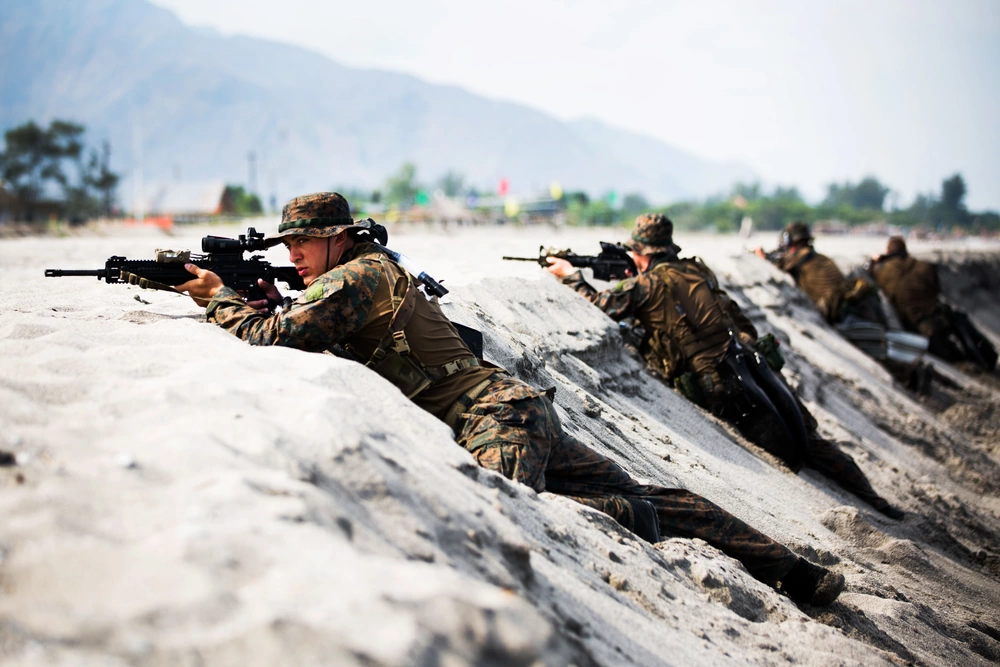Already a subscriber? Make sure to log into your account before viewing this content. You can access your account by hitting the “login” button on the top right corner. Still unable to see the content after signing in? Make sure your card on file is up-to-date.
The United States has kicked off its largest-ever joint military exercise with the Philippines.
Some shit you should know before you read: Since 1991, the United States has conducted the annual Balikatan military exercises with the Philippines. Balikatan, which means “shoulder-to-shoulder” in Tagalog, is designed to improve readiness for counterterrorism operations, disaster response, and joint combat capabilities. The exercise is a key pillar of the US-Philippine alliance under the 1951 Mutual Defense Treaty, which guarantees that the United States would defend the Philippines if attacked by a hostile actor. China has consistently criticized the exercises, accusing the US of provoking regional tensions, militarizing the South China Sea, and using the drills to contain China’s influence.

What’s going on now: In an announcement, US military officials confirmed that the 2025 Balikatan exercise will be the largest in the event’s history, with over 17,000 troops participating, including roughly 9,000 US personnel and 5,000 from the Philippines, alongside smaller contingents from Japan and Australia. The drills, which run from April 21 to May 9, will feature a range of scenarios designed to test combat readiness and interoperability between the allies. According to US Marine Corps Lt. Gen. James Glynn, who is serving as the US exercise director, this year’s drills represent a “full battle test” and are meant to simulate “real-world security situations relevant to the region.”
The exercise will showcase some of the US military’s most sophisticated weapons systems, including the Navy Marine Expeditionary Ship Interdiction System (NMESIS)—a highly mobile anti-ship missile launcher—as well as HIMARS rocket systems, unmanned sea vessels, and aerial drones. These will be used in live-fire exercises that include a maritime strike demonstration off Zambales on May 5, where a decommissioned Philippine Navy ship will be sunk as a target.

“This year’s Balikatan will showcase a full battle test,” Glynn said at the opening ceremony. “The purposeful integration of real-world security situations with live, virtual, and constructive training opportunities will give the Philippines and the U.S. a collective opportunity to demonstrate capabilities across all domains, across all services, and all forces.”
Gen. Romeo Brawner, Chief of Staff of the Armed Forces of the Philippines said, “We will assess our readiness in all domains—air, land, sea, cyber, information and the emerging frontier of space.”
This all comes as China’s state-controlled news outlet, the Global Times, criticized the 2025 Balikatan exercises, portraying them as a deliberate provocation aimed at escalating regional tensions. The publication dismissed the drills as a “super troll” rather than a meaningful military exercise, accusing the United States of using the Philippines as a staging ground to “contain China” and intensify an “us-versus-China” narrative. It particularly condemned the deployment of systems like the Navy Marine Expeditionary Ship Interdiction System (NMESIS) to the Luzon Strait, which it described as a key maritime chokepoint for Chinese naval access to the Pacific.
Chinese analysts quoted in the article argued that the real intent behind Balikatan is to pressure China, expand US military presence, and push the Philippines to buy US weapons, provide basing access, and participate in drills that target China. The Global Times warned that such actions risk turning the Philippines into a pawn in a broader geopolitical contest, cautioning that their alignment with the US could “sacrifice its own interests in the long run.”






